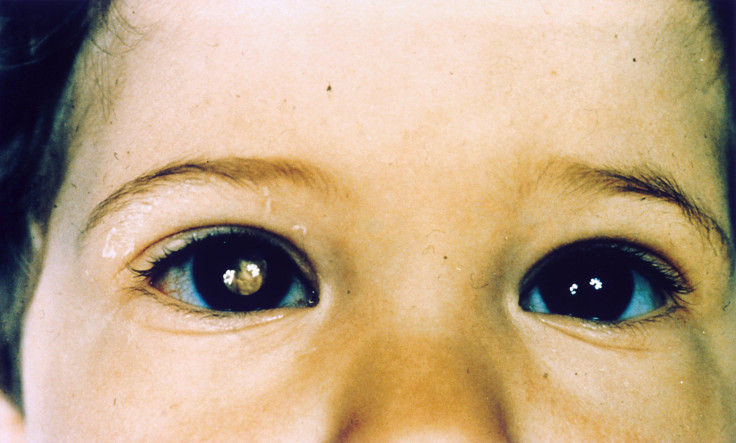What Is Retinoblastoma? Rare Cancer Discovered In 2-Year-Old’s Eye From Mom’s Cell Phone Photo

Julie Fitzgerald said she was terrified to photograph her 2-year-old son Avery because of what she might find. The Rockford, Illinois, mother had noticed something strange about her son’s left eye. After an Internet search, she came across the story of a woman whose pupil appeared white in photos instead of red -- it turned out the woman had cancer in her eye, according to CNN affiliate WREX-13.
“I did not want to take the picture because I had this dreaded feeling in the pit of my stomach,” Fitzgerald told the news station. “I took the picture and boom: His whole pupil was just white -- and that’s when I knew.”
Avery was diagnosed with retinoblastoma, a rare eye cancer that develops in the retina -- the inner, back layer of the eye. Tumors covered 75 percent of Avery’s eye and had to be removed. Had Avery’s parents waited any longer to get him examined, the cancer could have spread, doctors said. Their son will eventually get a prosthetic eye.
Retinoblastoma is the most common form of eye cancer in children. It typically begins in early childhood, before the age of 5, and usually affects only one eye, according to the National Institutes of Health (NIH). Between 250 and 350 children are diagnosed with the disease every year in the United States. Retinoblastoma accounts for about 4 percent of childhood cancer in people under 15 years of age.
The most noticeable sign of retinoblastoma is a visible whiteness in the pupil. “This unusual whiteness is particularly noticeable in photographs taken with a flash,” according to NIH. “Other signs and symptoms of retinoblastoma include crossed eyes or eyes that do not point in the same direction; persistent eye pain, redness, or irritation; and blindness or poor vision in the affected eye.”
Forty percent of retinoblastoma patients have the hereditary version of the cancer, which means they’re more likely to develop other types of cancer throughout their lives.
© Copyright IBTimes 2024. All rights reserved.






















